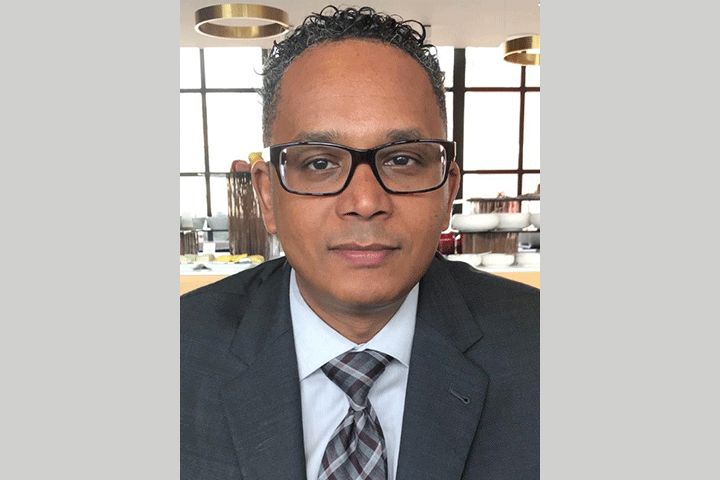“Radical Collaboration” to Find Cures for the Deadliest Cancers

People often think of scientific and medical advancements as the genius work of one person like Marie Curie or Alexander Fleming.
In actuality, scientific and medical achievements often result from collaboration. Take for example the Human Genome Project, a 13-year effort to generate the first sequence of the human genome. This project involved scientists from 20 different research centers and universities in six countries. In 2003, scientists told the world they completed the first almost complete sequencing of the human genome. This remarkable international achievement revolutionized genetic research, fueled the development of personalized medicine and, in no small way, was also a prime example of the power of collaboration. Even more recently, think of the international efforts to combat COVID.
Collaboration is the fundamental premise of Break Through Cancer. The foundation is built on the premise of what they call “radical collaboration.” Led by Tyler Jacks, Ph.D., Break Through Cancer has formed a research alliance with some of the nation’s top institutions, including Dana-Farber Cancer Institute (Boston), the Sidney Kimmel Comprehensive Cancer Center at Johns Hopkins (Baltimore), The University of Texas MD Anderson Cancer Center (Houston), Memorial Sloan Kettering Cancer Center (New York), and the Koch Institute for Integrative Cancer Research at MIT (Boston). The initial goal is to improve the understanding, interception, and treatment of four of the most highly lethal cancers: pancreatic cancer, ovarian cancer, glioblastoma, and acute myelogenous leukemia.
To reach these goals, the foundation got the buy-in of the collaborating institutions to share information, co-analyze data, pursue clinical projects collectively, and enhance the ability of their researchers to pursue their work in a highly collaborative way. “The four cancers we are focused on are difficult to treat and progress has been slow,” explains Break Through Cancer spokesperson Kari McHugh. To make rapid progress, she adds, institutions need to join forces and commit to working together as seamlessly as possible.
One way the foundation aims to reduce the limitations on the free flow of information by institutions is through what they call a “TeamLab” approach, involving physician–scientists from their partner institutions. This approach not only allows the best teams to work on the best ideas collaboratively, but it will also allow the sharing of data in real time and the flexibility to quickly adjust those projects as necessary, says McHugh. The Break Through Cancer team is also tackling day-to-day barriers to cross-institutional collaboration such as contract negotiations, data sharing, intellectual property constraints, and authorship policies.
Pancreatic Cancer Collaborations
Break Through Cancer has two pancreatic cancer projects underway. One focuses on KRAS, by far one of cancer’s most elusive and challenging targets. KRAS stands for Kirsten rat sarcoma viral oncogene homolog. It’s one of a group of genes that are part of a complex signaling pathway that helps regulate cell growth, division, survival, and death, all of which are normal cell processes.
However, when KRAS is mutated, that entire process is disrupted, leading to the uncontrolled cellular growth that defines cancer. About 90 percent of pancreatic cancers contain KRAS mutations, which would seem to make it an easy target for potentially life-extending precision medicine drugs.
But it’s a relatively small protein with a very smooth surface. It doesn’t even have the grooves—or deep pockets, as scientists call them—where small-molecule drugs can easily bind to the protein to inhibit, or halt, this uncontrolled cell growth.
Some recently developed KRAS inhibitors have shown promising results in some cancer types; however, KRAS inhibition remains difficult in pancreatic cancer treatment. Break Through Cancer hopes to change that. Partnering with the Lustgarten Foundation, they have funded a TeamLab project to target KRAS, called Conquering KRAS in Pancreatic Cancer.
The project has some significant goals, one of which is to understand the precise biochemical mechanisms of how new KRAS inhibitors suppress KRAS signaling. Because Break Through Cancer involves large cancer centers working together, the hope is that it will be much easier to recruit a diverse patient population with varying KRAS mutations into clinical trials, to better determine the impact of KRAS inhibition. As part of the project, the group plans on designing clinical trials focused on implementing combination treatments that can potentially enhance the efficacy, durability, and tolerability of KRAS-targeting therapies. The team will also develop pharmaceutical partnerships to accelerate the translation of new KRAS inhibitors into effective drugs for this disease.
“The Lustgarten Foundation is built on the belief that research is essential to transforming pancreatic cancer into a curable disease and that research progress is accelerated when we enable collaboration and make space for innovation and creativity,” says Andrew Rakeman, Ph.D., Lustgarten’s Vice President of Research, adding that Break Through Cancer is a “natural fit.” “Partnering allows us to leverage the resources and strengths of both organizations to tackle the hardest questions and biggest challenges in pancreatic cancer research,” he adds.
The second pancreatic cancer project underway is called Demystifying Pancreatic Cancer Treatments. The team will take on pancreatic cancer’s hostile, dense, and immunosuppressive microenvironment using the most advanced molecular profiling methods available today. They will test three therapeutic drug combinations, which will be given before the participants have surgery to remove their tumors, using a clinical trial design the research team previously demonstrated to be safe. The team will test varying combinations of agents, complete a multifaceted analysis of the surgically-removed tumor and its microenvironment, and analyze the mechanisms by which cancer cells develop therapeutic resistance, among other efforts.
More about Break Through Cancer
Break Through Cancer was launched in 2021 with a challenge pledge of $250 million from Mr. and Mrs. William H. Goodwin, Jr. and their family, and the estate of William Hunter Goodwin III. This represents one of the largest gifts ever in support of cancer research.





